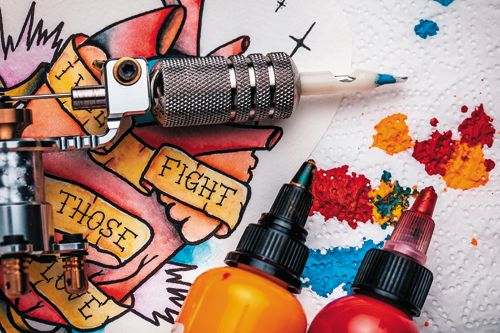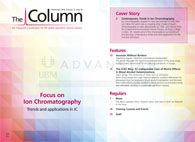Toxic Metal Characterization in Tattoo Ink
Researchers from Postnova Analytics, Landsberg, Germany, have developed a quantitative method to detect traces of toxic metals in tattoo ink using asymmetrical flow field-flow fractionation in combination with inductively coupled plasma mass spectrometry (AF4-ICP-MS).
Photo Credit: Mikhall_Kayl/Shutterstock.com

Researchers from Postnova Analytics, Landsberg, Germany, have developed a quantitative method to detect traces of toxic metals in tattoo ink using asymmetrical flow field-flow fractionation in combination with inductively coupled plasma mass spectrometry (AF4-ICP-MS) (1).
Tattoo popularity has risen sharply over the last decade and with it an increasing level of concern over the safety of tattoo inks. Currently, manufacturers of tattoo inks are under no obligation to reveal their constituents, despite the potential health risks associated with some ingredients. As most tattoo inks on the EU market are imported from the US (2), this is unlikely to change, which has increased the need for analytical methods to quantitatively assess possible allergenic ingredients in tattoo inks. “Tattoo ink is a very complex mixture of different kinds of ingredients,” said Florian Meier, Research and Development, Postnova. “Mostly not very well characterized,” he continued.
A recent report by the European Commission (EC) found a high level of variation in tattoo ink constituents, including a number of hazardous chemicals (2). The report found that 43% of tested inks contained polycyclic aromatic hydrocarbons (PAHs), 14% included primary aromatic amines (PAAs), 9% contained heavy metals, 6% included preservatives, and a further 11% had microbiological contamination (2).
Despite these findings there is an absence of comprehensive methods capable of characterizing tattoo ink ingredients for proper toxicological evaluation, and this knowledge gap was continually highlighted within the EC report (2).
Researchers at Postnova tackled one facet of this issue by developing a method using AF4-ICP-MS to detect traces of toxic metals in four ink samples of unknown origin. “AF4-MALS-ICP-MS allows for the fractionation and simultaneous sizing as well as elemental speciation of (nano)-particulate tattoo ink ingredients [pigments]. By these means, a correlation between ingredients of various sizes and their respective metal contents is possible,” explained Meier.
“AF4-ICP-MS enables quantification of various (nano)-metallic ingredients down to trace levels [< mg/L],” according to Meier, and allows the “comparison of AF4-ICP-MS with batch-ICP-MS data” to differentiate between dissolved and particulate metals, which can be used interpret toxicological findings.
This research is a positive step, however, more research and method development is still required to produce the analytical methods capable of fully monitoring and regulating the tattoo ink market. - L.B.
Reference
- E. Moldenhauer, T. Pfaffe, F. Meier, T. Klein, and S. Tadjiki, Characterization of Metal-containing Nanoparticles in Tattoo Ink using AF4 coupled with MALS and ICP-MS (Poster; Currently not in press)
- P. Piccinini et al., European Commission JRC Science For Policy Report: Safety of tattoos and permanent make-up (2016).

Measuring Vitamin K1 Concentrations in Dogs with Chronic Enteropathy Using LC–MS/MS
May 14th 2025A joint study between the University of Tennessee (Knoxville, Tennessee) and the University of Pennsylvania School of Veterinary Medicine (Philadelphia, Pennsylvania) compared directly measured vitamin K1 (vitK1) concentrations in healthy dogs and dogs with chronic enteropathy (CE) using liquid chromatography tandem mass spectrometry (LC–MS/MS); they also investigated whether supplementation of vitK1 in dogs with CE would significantly increase vitK1 concentrations.
HPLC 2025 Preview: Fundamentally Speaking (Part 2)
May 14th 2025Michael Lämmerhofer from the Institute of Pharmaceutical Sciences, University of Tübingen, Germany, spoke to JFK Huber Lecture Award winner of 2024 Torgny Fornstedt, professor in analytical chemistry and leader of the Fundamental Separation Science Group, Karlstad University, Sweden, about his pioneering work in high performance liquid chromatography (HPLC) with a focus on fundamentals, ion-pair chromatography, and oligonucleotide applications.

.png&w=3840&q=75)

.png&w=3840&q=75)



.png&w=3840&q=75)



.png&w=3840&q=75)








